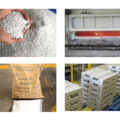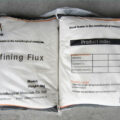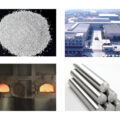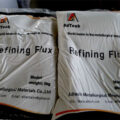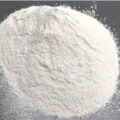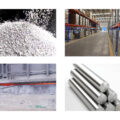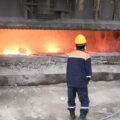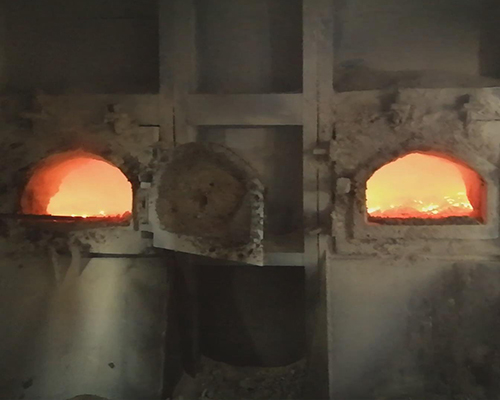
The working principle of aluminum casting flux purification is adsorbing and dissolving the oxidized inclusions in the aluminum melt, and floating to the surface of the molten aluminum through the density difference. The aluminum casting flux purification process is a complex multiphase process, which is restricted by many factors, the most important of which is the thermodynamic and kinetic conditions of purification.
The process of aluminum casting flux purification for the dissolution, combination, and adsorption of melt inclusions is based on the basic premise of the flux becoming a liquid phase in the melt, that is, the flux is required to be in a molten state during the purification process, not a solid phase. Through the component design of the flux, the realization of the low-melting-point physical properties of the flux and the creation of a low-melting-point environment for the refining process are one of the basic problems in the preparation of the flux.
Therefore, the primary factor to be considered in the preparation of the flux is to make the melting point of the flux lower than the melting point of the liquidus of the aluminum melt. Under normal atmospheric pressure, the melting point of aluminum is about 660°C, and the liquidus temperature of aluminum alloy melts with alloying elements also changes with the composition of the alloy, mostly above 660°C. The single-phase melting point of commonly used flux components is mostly higher than the liquidus temperature of aluminum alloy melt, which means that if a single-phase form is used as a flux, the prepared flux will not be able to act as inclusions in a liquid form during the purification process, which is the driving force for flux purification. The learning process is impossible to achieve.

When the flux for aluminum melting meets solid slag inclusions on the surface of the aluminum melt or inside the aluminum melt, the physical properties of the slag particles will be changed, and the slag inclusions on the surface and inside of the aluminum melt will be separated from the aluminum melt.
On the surface of the aluminum melt, the removal of suspended slag by the flux depends on the mutual surface tension relationship between the three interfaces of the flux, the aluminum melt, and the air; while the slag is contained in the aluminum melt, and the removal by the flux depends on the flux and the aluminum melt. The mutual surface tension relationship between the interface of solid and solid slag inclusions.

